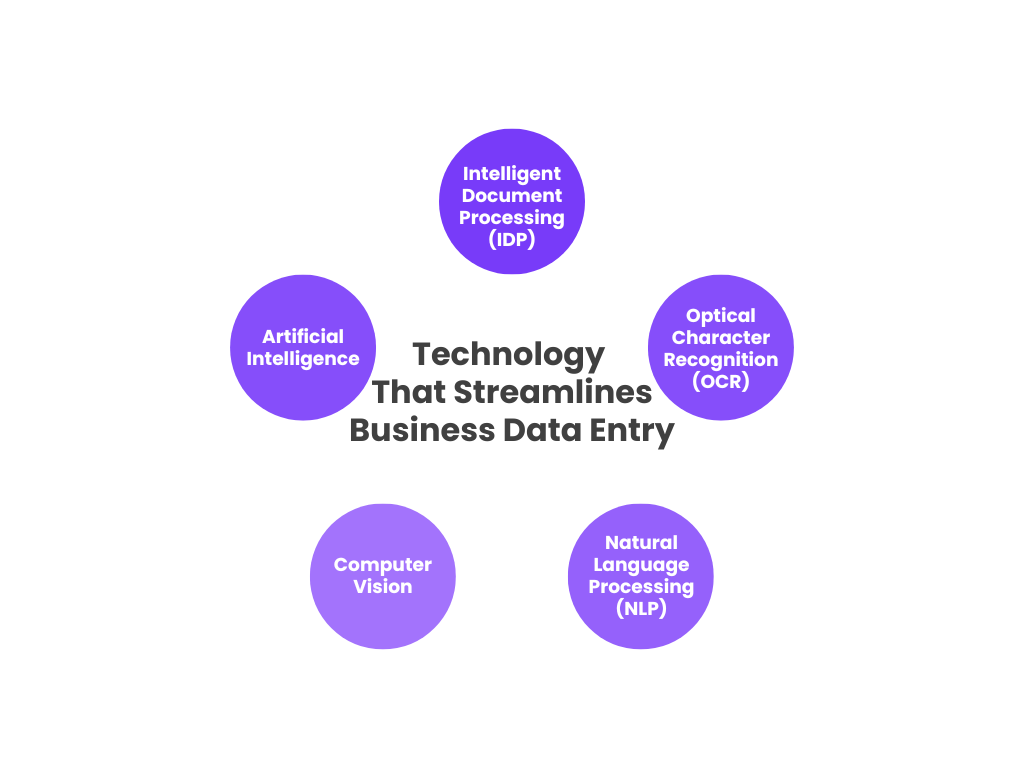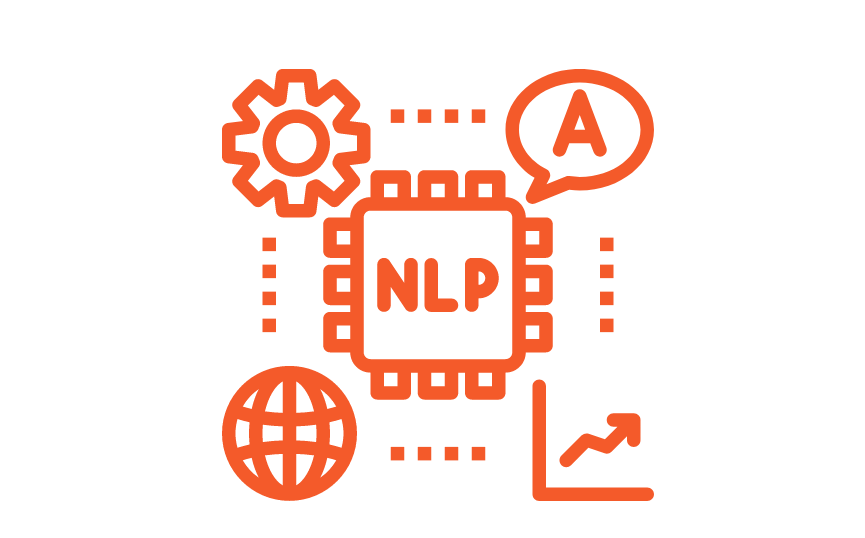Today, data plays a crucial role in enhancing decision-making. But before you leverage this data, you need to capture it, and technology like process automation makes capturing it exponentially easier.
Let’s explore how organizations can use process automation to leverage high-quality data to gain a competitive edge and achieve better decision-making outcomes.
Data challenges
If you think the data problem is a few misfiled pieces of paperwork, think again. Only 3% of enterprise data meets quality standards. That means most organizations are making decisions based on unsound data. Take a look at five other ways poor-quality data can leach into other areas of your business:
- 8 out of 10 employees waste time recreating documents if they can’t find them quickly
- 9 out of 10 team members waste a full workday each week sorting through company data
- Gartner estimates that 40% of enterprise data is inaccurate or incomplete—leading to missed opportunities and poorly guided insights
- 9 out of 10 spreadsheets contain errors. A few slight typos can sink ships: NASA lost $80 million when an errant hyphen caused a Venus-bound probe to explode.
- Poor data quality costs the average organization $12.9 million per year—and that’s just in losses they can trace.
If these eye-opening statistics don’t inspire you to rethink your data strategy, this will. None of these challenges are one-off: they compound daily across organizations. Data quantity doubles every two years, causing innocuous challenges to snowball and leave lasting effects. What does clean data mean for your organization, and how can you leverage it?

How to spot poor quality data
The typo that brought down NASA’s Mariner 1 can be hidden anywhere in your systems. Data cleansing is the process of rooting them out. You can pinpoint errors, duplicates, and mistypes by scrubbing your data.
- Validation: There are few guardrails in place for poor formatting (for example, some phone numbers contain a country code and others don’t; some birthdates are in DD/MM/YYYY format, while others pop up in MM/DD/YYYY). Impossible inputs can also throw off decisioning—like a large swath of customers accidentally selecting a 1900 birth year.
- Outdated Information: Data has a shelf life. Experts say data decays at a rate of 30% per year. A database with incorrect emails, last names, and addresses can cost companies millions annually.
- Missing data: Details might not be standardized across groups. For example, a florist might start a new campaign requesting anniversary dates from new customers. But they forget to poll current customers, leaving a significant gap in information between the two segments. Identify what data you are missing, and proactively reach out to fill in the blind spots.
- No protections against outliers: Anomalies in data can sometimes lead to golden-ticket insights. But other times, they can throw off machine learning models. For example, a few power users of an IoT-enabled fitness tracking device can tank reporting. Creating outreach campaigns based on a top-loaded average won’t connect with most users.
- Duplicate information: Organizations hold multiple versions of a single document, a challenge for team members looking for the most up-to-date version. Similarly, data like customer emails are housed across multiple-point solutions: think of a company with a CRM that stores a separate copy of its contact list in a marketing campaign platform.
With all the hype around machine learning (ML) and artificial intelligence (AI), your organization is probably chomping at the bit to implement new tech. But more important than getting a crack at these computational marvels is the quality of your data.
Without clean, high-quality data, algorithms and mathematical models continue with the mistakes already plaguing your organization.
Fortunately, there are dozens of new technologies automating data entry.
New technologies streamlining business data entry
Gone are the days of hand-typing information into a database. We spent long hours inputting contact details from business cards collected at conferences or transferring an application form into a spreadsheet.
Now, technology has taken on the legwork. Days-long processes now run autonomously in mere moments. Here are five tools smart organizations use to perform automated data entry.

Intelligent document processing (IDP)
Intelligent document processing (IDP) uses AI and ML to read documents like applications, forms, invoices, business cards, and more. It can pinpoint specific information on a document—like a mailing address. It can then act on that information to complete forms, prepare mailings, and populate databases or CRMs.
IDP helps organizations tap into the 97% of disorganized, unmonitored, and unused data. Best yet, IDP and its related technologies do much of the data cleansing for you. It’s an ace at processing both structured and unstructured data, like:
Structured data & unstructured data
Bank transactions, receipts, serial numbers
Social media messages, emails, IoT sensor data
Strictly organized, like the row and column format of a spreadsheet or table
Each document follows its own rules—there isn’t a rigorously followed format
Content follows a schema. Data points appear in identical locations across document types (for example, a W-2 from the IRS)
Information pops up in different locations (for example, a transcript of a focus group or an exchange with a chatbot)
Optical character recognition (OCR)
This technology lets machines perceive individual letters, numbers, and characters on a document. Using their digital eyes, they can skim an application and pinpoint the location of a phone number, the letter ‘Q,’ or a passage of text—with over 99% accuracy.
Natural language processing (NLP)

With natural language processing (NLP), machines can do more than extract information from a document—they can understand what they’re reading. NLP glides through documents at record speeds to know whether it’s a sales contract or an invoice. Using sentiment analysis, it can also judge the attitude of the information, like a positive or negative product review. The results can trigger business processes or other tasks.
Computer vision
Autonomous cars can measure the distance to the next vehicle through computer vision, and robots can yank defective products from the assembly line. Computer vision can also suss out errors in documents, like smudges or typos, to aid in data cleansing efforts. Then, it can enlist image processing to fix the slip-up smartly.
Artificial intelligence
You may have toyed with large language models like ChatGPT to draft a sales campaign or discover the meaning of the universe. AI’s unparalleled ability to comb and interpret a large volume of information can benefit your data, too, by summarizing numbers into more digestible narratives.
Semantic search, another area of AI, helps solve the findability problem by upending the traditional “search” process. (If you recall from the beginning, 9 out of 10 employees lose a full workday each week dredging company data for what they need.)
Instead of a computer querying its contents for your very specific search terms, it can browse more contextually.
For example, a medical researcher looks up “PharmX side effects” and receives just that. Using semantic search, they’ll get helpful information that might be tangentially related, like complications, adverse reactions, and side effects of similar medications.
What accurate data means for the future of business intelligence
Gartner ranks “applied observability” as one of the top strategic tech trends of 2023. What does this mean for your data? The interval between customer behavior and company action is shrinking. Organizations need to position themselves for swift action based on real-time data.
That means more internal processes will carry data points from PDFs, applications, sensors, and user analytics. Gone are the days of scanning a document and walking away—data needs to move through your operations to power everything from back-office management to customer-facing experiences. Process automation serves as data’s shepherd—but only if it’s clean.
Clean, high-quality data has driven AI decisions that rewrote the future of Fortune 500 companies.
There’s another trend primed to unload an unparalleled trove of data into your organization: IoT sensors. Customer habits and product behaviors will be available to you in an instant. If you’re collecting clean data responsibly, you can act on it at incredible speeds:
- Enlist AI to calculate a niche quote
- Generative AI can write an on-the-spot offer
- Reroute a process in the fleet based on a specific action
Artificial intelligence (AI), Generative AI, and machine learning (ML) work best when fed clean, consistent, and highly relevant data. It mirrors the programming adage, “garbage in, garbage out.” So, ensure your organization is well-positioned to reap the benefits of next-generation tech.
How does AI boost Hyper-Productivity?
Artificial intelligence can be a game-changer for your organization in more ways than one. One of the most significant ways you can transform your workflow is by boosting Hyper-Productivity. Instead of simply being productive, your team can become Hyper-Productive, completing work faster and more efficiently than ever.
By working with tools like intelligent document processing (IDP) now, your data will be ready for the golden age of AI. Chat with our team to learn how you can transform your processes with intelligent automation and business process automation (BPA).





